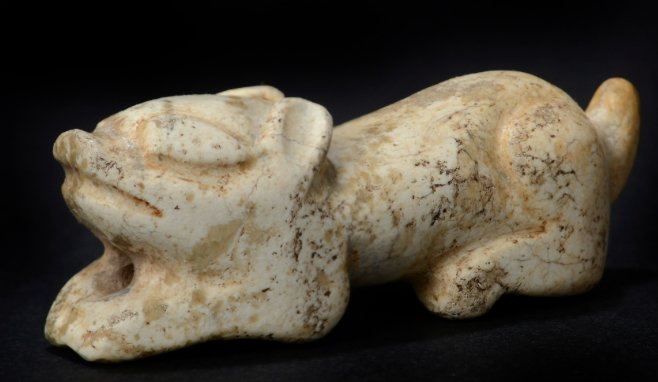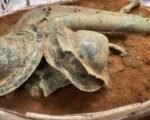In a remarkable archaeological find, researchers in Chifeng, China, have unearthed a jade dragon figurine linked to the Neolithic Hongshan culture, dating back 5,000 years. This discovery not only highlights the craftsmanship of the Hongshan people but also sheds light on their cultural practices and beliefs.
The jade dragon, described as the largest of its kind ever found from the Hongshan culture, exemplifies the intricate artistry that characterized this ancient civilization. Alongside the dragon, archaeologists uncovered various artifacts that provide insight into the daily life and rituals of the Hongshan people.
The Significance of the Jade Dragon
The jade dragon figurine, measuring over six inches long and four inches wide, is a stunning representation of the Hongshan culture’s artistic capabilities. Known for their unique jade and clay sculptures, the Hongshan people often created pieces depicting symbolic creatures, including what are referred to as “pig-faced” dragons.
- Key features of the jade dragon:
- Dimensions: Over 6 inches long, 4 inches wide, and 1 inch thick.
- Represents the artistic style of the Hongshan culture.
- Considered the largest jade dragon discovered from this period.
While the exact meaning and purpose of the jade dragon remain unclear, its discovery has sparked interest and debate among experts regarding its significance in the context of Neolithic rituals and beliefs.

Insights from the Excavation
The excavation site in Chifeng, located in the Inner Mongolia Autonomous Region, has been a focal point for researchers studying the Hongshan culture since its initial discovery in 1908. The recent excavation aimed to understand the ancient environment of the region and involved extensive topographic mapping and carbon dating.
- Findings from the excavation include:
- A circular tomb and a unique square altar, the only one of its kind in the region.
- Other artifacts such as painted pottery basins and tripod-shaped cups.
- Human remains, indicating the site’s ritualistic significance.
These discoveries suggest that the tomb was not merely a burial site but a complex ritual structure that reflects the sophistication of the Hongshan culture thousands of years ago.
Expert Opinions on the Jade Dragon
While the jade dragon is celebrated as a significant find, some experts urge caution in labeling it as a dragon. Gideon Shelach-Lavi, a professor of East Asian Studies, points out that while the artifact is impressive, similar jade pieces have been found in other Hongshan tombs, and the term “dragon” may not accurately represent its cultural context.
- Shelach-Lavi’s perspective:
- The term “dragon” may be anachronistic.
- Similar artifacts have been discovered, suggesting a broader tradition rather than a unique piece.
Despite differing opinions on its classification, the jade dragon remains a testament to the artistic and cultural achievements of the Hongshan people.
The Legacy of the Hongshan Culture
The Hongshan culture, which thrived in the West Liao River basin as early as 4,700 B.C.E., is known for its impressive jade craftsmanship and complex societal structures. The recent discoveries in Chifeng contribute to a growing understanding of this ancient civilization and its contributions to Chinese history.
As archaeologists continue to study the artifacts and the context in which they were found, the legacy of the Hongshan culture becomes increasingly clear. The jade dragon and other relics serve as a bridge to the past, offering glimpses into the lives and beliefs of a people who flourished thousands of years ago.













